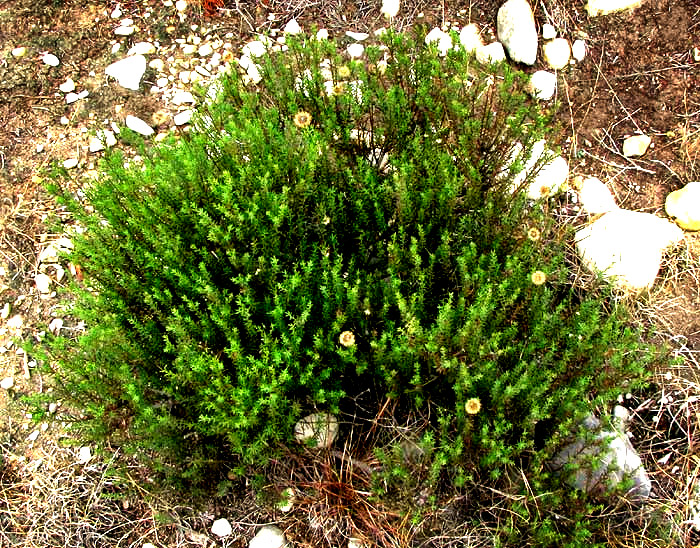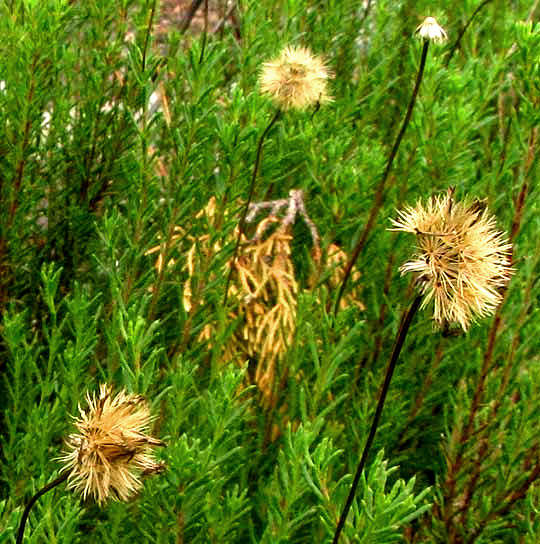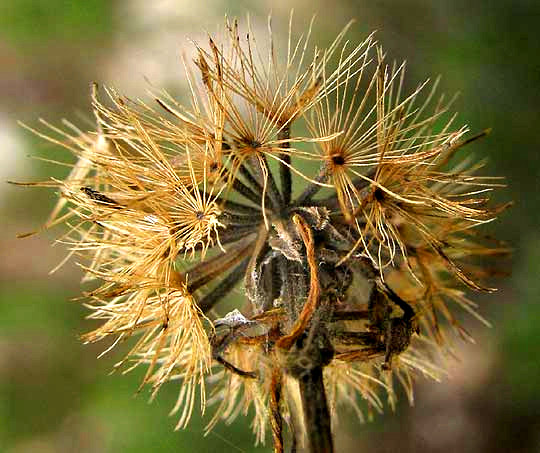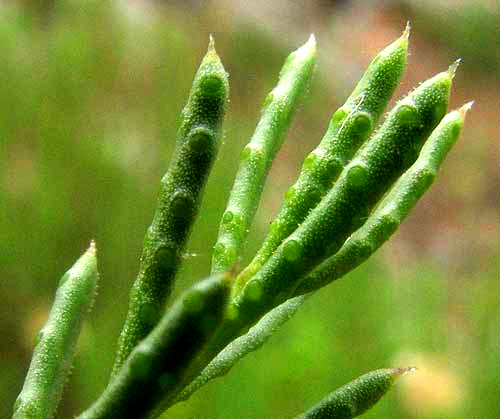Excerpts from Jim Conrad's
Naturalist Newsletter

from the December 23, 2012 Newsletter issued from the valley of the Dry Frio River in northern Uvalde County, southwestern Texas, on the southern border of the Edwards Plateau; elevation ~1750m (~5750 ft); N29.62°, W99.86°; USA
DAMIANITA
Down on the cobblestone terrace next to the Dry Frio River behind the cabin there are plants not found elsewhere in the neighborhood because rainwater passes through the cobbles creating extremely dry growing conditions atop them. Trees are sparse and only plants adapted to desert conditions grow there. One of those plants I've not seen beyond the terrace is the dense, much branched, knee-high, evergreen shrub bearing mothball-sized fruiting heads shown above. You can see how the heads are held above the foliage on long, slender peduncles below:

Up close the heads bear achene-type fruits topped with stiff, brownish hairs serving as parachutes for wind dispersal exactly like so many species in the Composite or Sunflower Family. It's a little surprising that this woody bush is a member of the Composite Family because the vast majority of composites are herbaceous. A close-up of a head, almost looking like a brown Dandelion puffball, is below:

Even more surprising for a Composite Family member is what the alternate (one leaf per stem node) leaves look like, shown below:

Those sharp-tipped leaves are a little less than half an inch long (10mm), round in cross section, somewhat succulent, and heavily equipped with oil glands. The glands come as no surprise if you brush against the shrub and smell the strong fragrance that erupts from the plant. It's a slightly medicinal odor, like you might expect from soured juniper berries, if juniper berries soured.
This interesting shrub is known by its Spanish name, Damianita. It's CHRYSACTINIA MEXICANA, its species name reflecting the fact that it's mostly Mexican in distribution, widely occurring in thin soils on limestone outcrops and desert plains in 16 northeastern and central Mexican states, extending into the US only in southern New Mexico and southwestern Texas. Damianita produces small, yellow flower heads that, according to pictures on the Internet, can be much more numerous than the few fruiting heads on our bush. In fact, Damianita can be so pretty in flower that many gardeners in the arid southwestern US plant it where they need something attractive that can survive long droughts in full sunlight, and some coldness. Damianita can be propagated in the garden either by seeds or softwood cuttings.
When you meet such an aromatic plant you can bet that it has fame as a traditional medicine, and that's the case with Damianita. A tea of its stems and leaves is used in Mexico for treatment of skin infections and respiratory ailments.